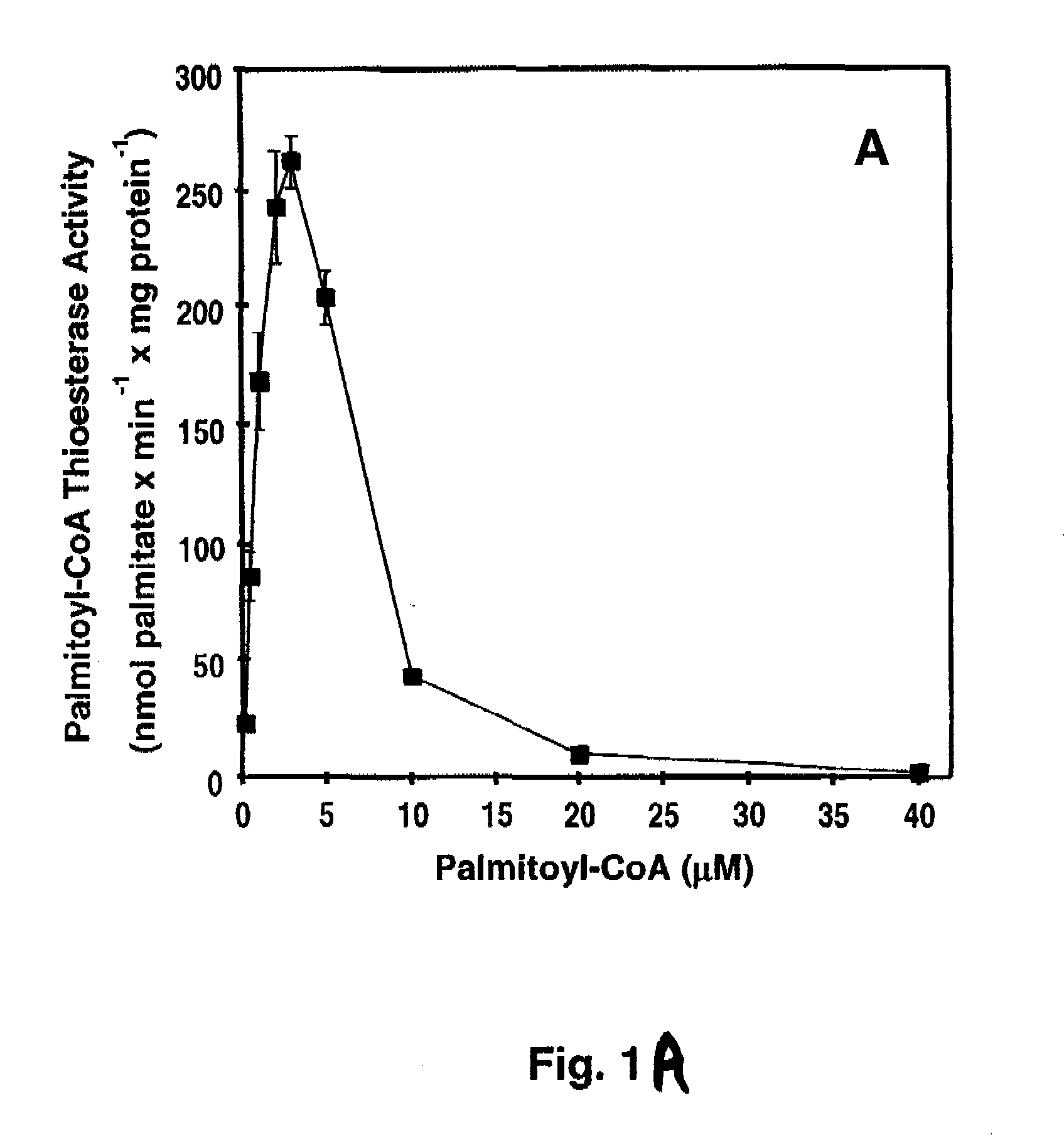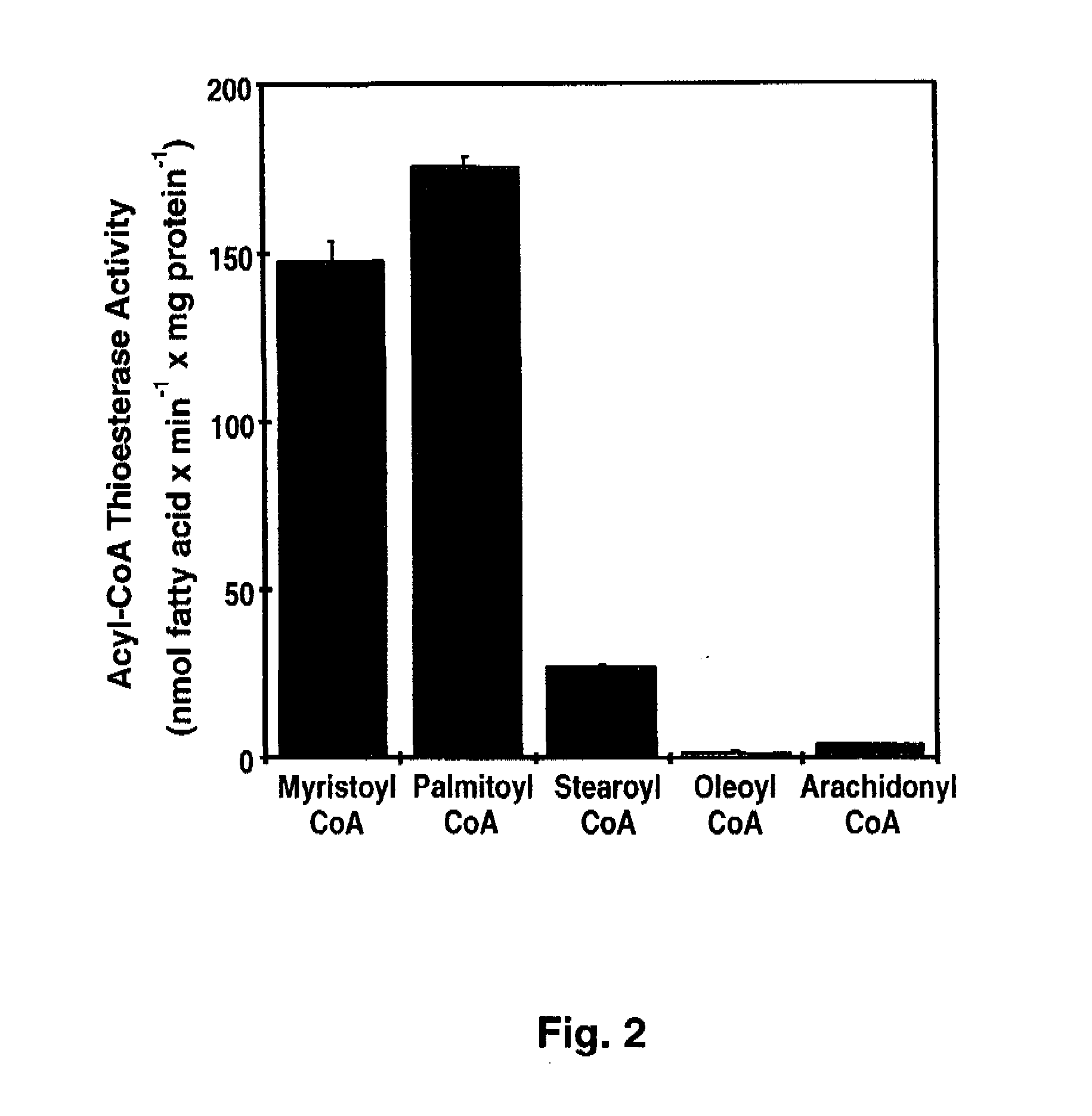Enhanced medical treatments resulting from chemical identification of calcium influx factor, identity with the factor activating phospholipolysis and precipitating sudden death during myocardial infarction, and determination of similar activating mechanisms in multiple cell types through disinhibition of calcium-independent phospholipase a2beta
a technology of calcium influx factor and chemical identification, applied in the field of biomarker screening, can solve the problems of serious life-threatening, poorly understood biochemical mechanisms underlying metabolic syndrome and its end-organ sequelae, and achieve the effects of enhancing the interaction of ipla2, promoting re-formation of ipla2:cam complex, and reducing phospholipid hydrolysis and associated ischemic damag
- Summary
- Abstract
- Description
- Claims
- Application Information
AI Technical Summary
Benefits of technology
Problems solved by technology
Method used
Image
Examples
example
[0080]Materials—[1-14C]-palmitoyl-CoA and [1-14C]-oleoyl-CoA, and 1-palmitoyl-2-[1-14C]-oleoyl-sn-glycero-3-phosphocholine were obtained from Perkin-Elmer. [1-14C]-Arachidonoyl-CoA, [1-14C]-myristoyl-CoA, [1-14C]-stearoyl-CoA, and [methyl-14C] human albumin were obtained from American Radiolabeled Chemicals. 1-palmitoyl-2-oleoyl-sn-glycero-3-phosphocholine (POPC) and 1,2-dioleoyl-sn-glycero-3-[phospho-L-serine] (DOPS) were purchased from Avanti Polar Lipids. 2-decanoyl-1-(O-(11-(4,4-difluoro-5,7-dimethyl-4-bora-3α,4α-diaza-s-indacene-3-propionyl)amino)undecyl)-sn-glycero3phosphocholine (BODIPY-PC) was purchased from Invitogen. High purity bovine calmodulin was obtained from Calbiochem. Most other materials were obtained from either Sigma or Fisher Scientific. BEL was purchased from Cayman Chemical and separated into individual enantiomers as described previously (62).
[0081]Expression and Affinity Purification of iPLA2β(His)6 (peptide disclosed as SEQ ID NO: 4) from Sf9 Cells—Followi...
PUM
| Property | Measurement | Unit |
|---|---|---|
| molecular weights | aaaaa | aaaaa |
| pH | aaaaa | aaaaa |
| emission wavelengths | aaaaa | aaaaa |
Abstract
Description
Claims
Application Information
 Login to View More
Login to View More - R&D
- Intellectual Property
- Life Sciences
- Materials
- Tech Scout
- Unparalleled Data Quality
- Higher Quality Content
- 60% Fewer Hallucinations
Browse by: Latest US Patents, China's latest patents, Technical Efficacy Thesaurus, Application Domain, Technology Topic, Popular Technical Reports.
© 2025 PatSnap. All rights reserved.Legal|Privacy policy|Modern Slavery Act Transparency Statement|Sitemap|About US| Contact US: help@patsnap.com



